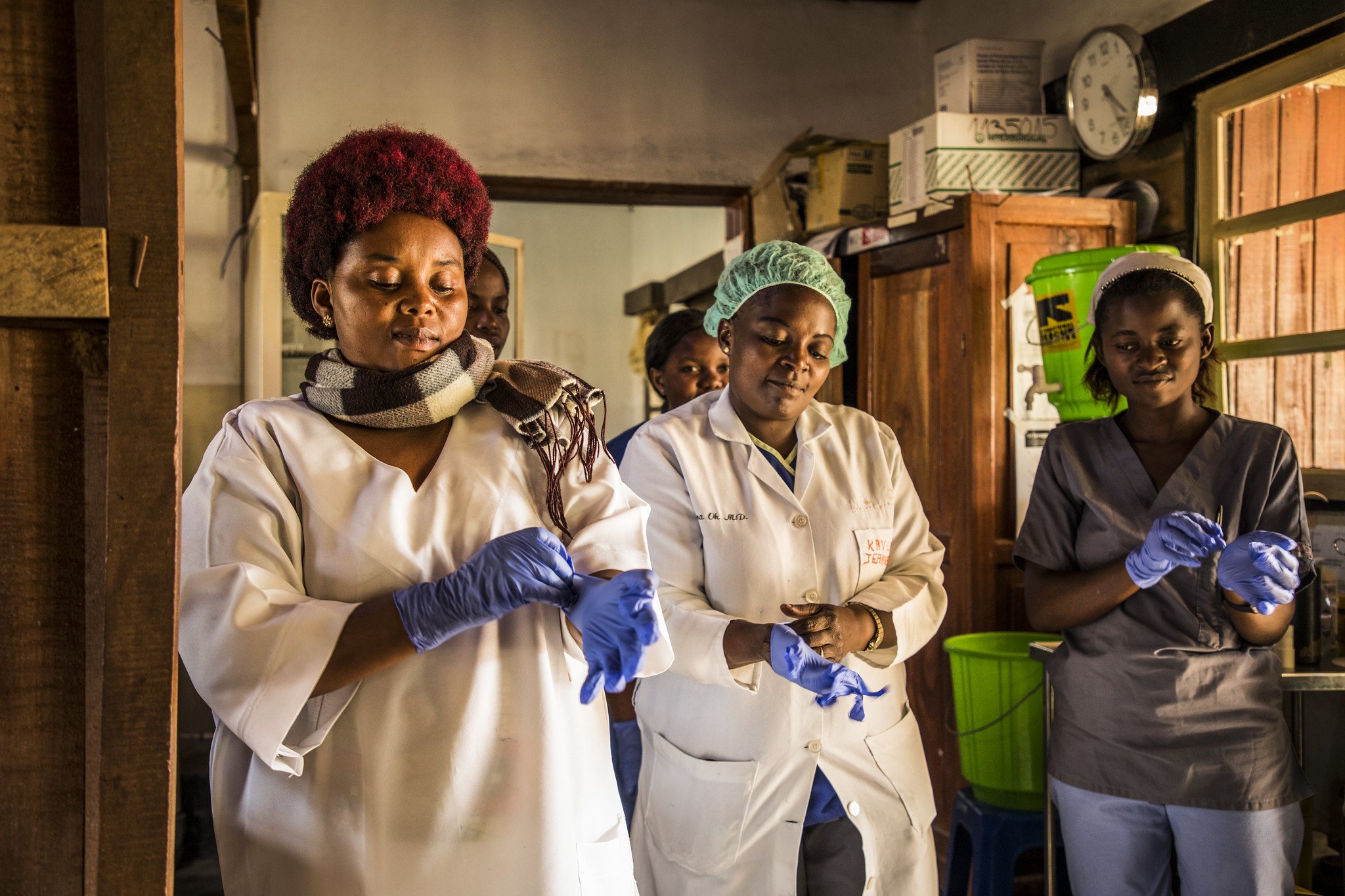Remember those 10 crises and trends to watch in 2019 we presented back in January? We’ve been keeping an eye on them, reporting on how areas from climate change to political transitions in South Sudan and the Democratic Republic of Congo are impacting humanitarian needs and response. With 2019 just about half over, it’s time for an update.
Here’s what’s changed over the past six months, what we’re paying special attention to, and how it may affect the lives and livelihoods of people on the ground. Look for two updates every day this week, including today's on infectious diseases and anti-terror compliance.
Be sure to share your thoughts – and ideas for our continuing coverage – at [email protected] or @newhumanitarian
Infectious diseases are adding to humanitarian operations already under strain. An Ebola outbreak in the Democratic Republic of Congo has crept across the border to Uganda. Pakistan is seeing a spike in HIV cases amongst children. And measles has risen in countries such as Ukraine and Yemen, already mired in conflict. Worse – attacks against medical workers, growing conflict, and climate change are making it even harder to contain outbreaks.
What’s new:
Healthcare workers have scrambled to contain waves of infectious diseases sweeping across nations – rich and poor. In the first three months of the year alone, the number of measles cases worldwide quadrupled compared to the same period last year. Africa saw the most dramatic rise with an increase of some 700 percent on the continent, while countries such as Madagascar, Ukraine, and Yemen – already struggling to meet humanitarian needs – also saw a surge. The Ebola outbreak in Congo grew to be the second deadliest since 1976 with cases spreading across the Ugandan border and containment efforts thwarted due to more than 170 attacks against health workers. Misinformation surrounding vaccination efforts also contributed to spikes in violence and the suspension of operations. In Pakistan, meanwhile, more than 800 people – some 80 percent of them children – tested positive for HIV in an outbreak that spotlights the country’s healthcare and treatment practices. Outbreaks of diphtheria in Venezuela and Haiti have also continued, with new cases reported this year.
Why we’re watching:
Antibiotic resistance is on the rise and could have far-reaching effects on humanitarian workers trying to treat simple illnesses and injuries in conflict situations and beyond. By 2050, as many as 10 million people could die from an infection resistant to antibiotics, experts say. Climate change is also expected to further the spread of more diseases this year. Hurricane season is underway, and already this year rare back-to-back cyclones in Mozambique and southern Africa caused spikes in malaria and cholera cases. Warming temperatures are also expected to increase dengue fever cases, with southern Africa and the Sahel particularly at risk due to weakened healthcare systems and growing populations. Unless halted, attacks against healthcare workers may allow the Ebola outbreak in Congo to spread to the populous city of Goma and regionally to Rwanda or South Sudan. There have already been cases in Uganda. Equally, continuing attacks against medical workers in Sudan, Libya, Syria and Yemen are expected to limit humanitarian efforts to treat diseases and injuries.
Keep in mind:
Epidemics and outbreaks are costly to manage and contain – especially at a time when some donor nations are curtailing spending. The Ebola response is still short of more than $10 million that it was promised, and now the World Health Organisation is pleading with partners to help fill the shortfall. If the outbreak isn’t stopped, there’s also the chance that countries could run out of vaccines to guard against the virus.
(TOP PHOTO: Health workers put their gloves on before checking patients at the hospital in Beni, Democratic Republic of Congo.)





